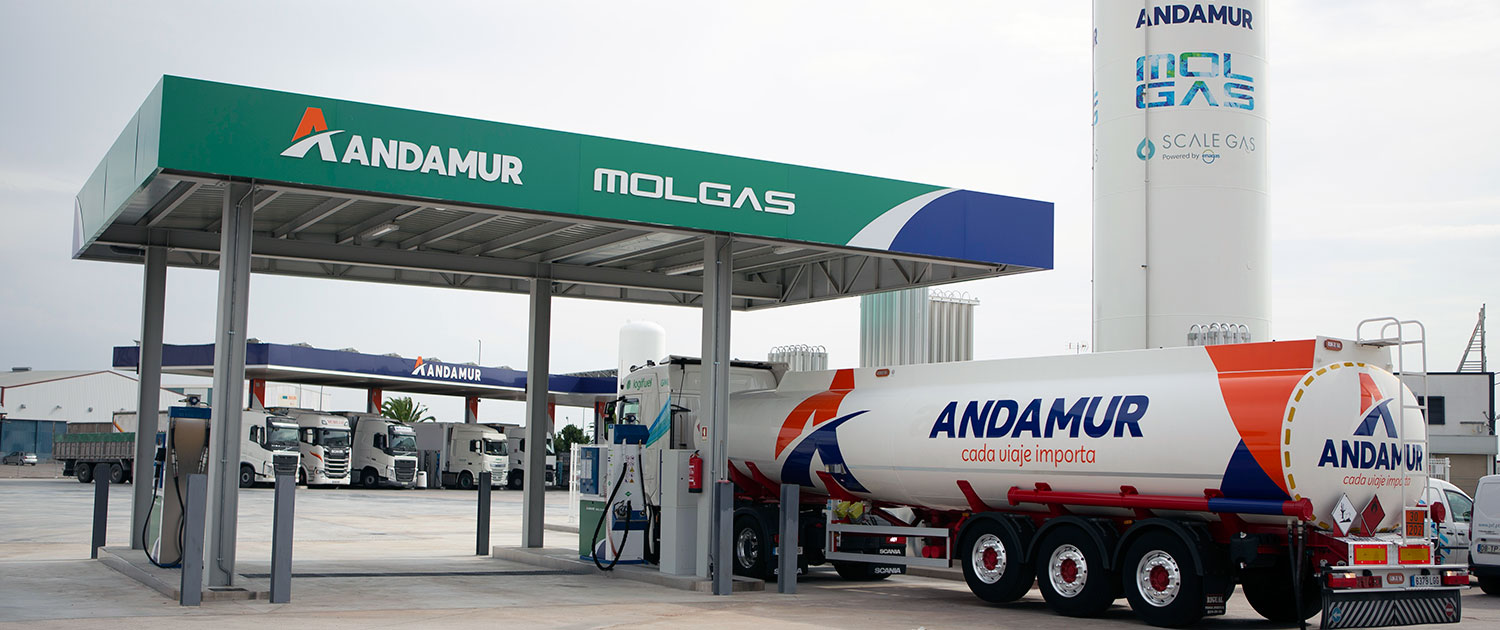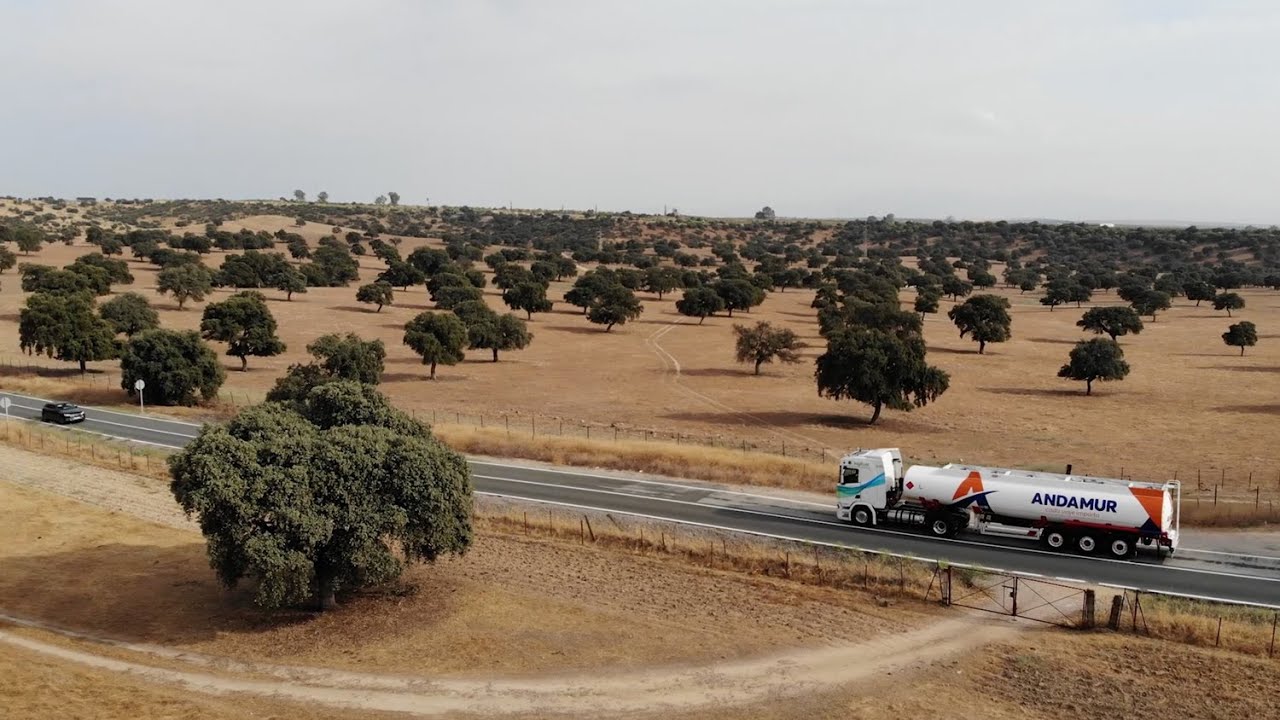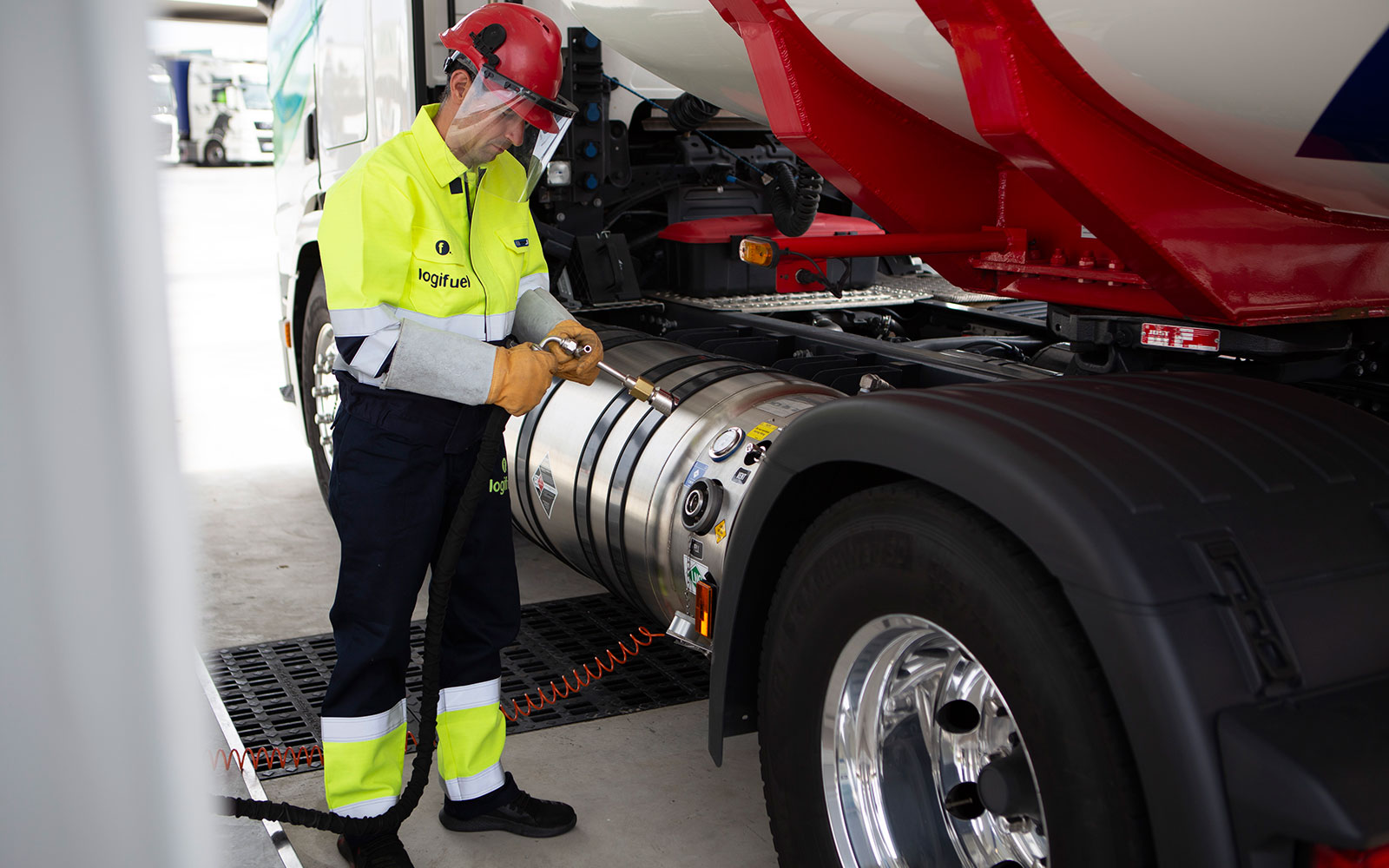


We’re committed to natural gas as a clean, safe and environmentally friendly fuel, since it reduces oxides of nitrogen (NOx) by 85% and eliminates 96% of solid particle emissions (PM). It also helps mitigate the greenhouse effect by eliminating sulphur emissions and reducing carbon monoxide (CO) and CO2 emissions by up to 25%.
LNG is natural gas cooled to -161º so that it condenses and is converted into a liquid, reducing its volume 600-fold compared to its gaseous state and allowing storage capacity that delivers excellent range. Recommended use: Heavy vehicles. Efficient and environmentally friendly.


CNG is a colourless and highly flammable gas. It is lighter than air. CNG for commercial use contains a slight sulphur smell so that it can be detected. Recommended use: Cars / small vans. Efficient and environmentally friendly.
What’s the difference between LNG (liquefied natural gas) and CNG (compressed natural gas)?
LNG (liquiefied natural gas) is natural gas cooled to -161º so that it condenses and is converted into a liquid. This reduces its volume 600-fold compared to its gaseous state, creating storage capacity to provide excellent range.
Recommended for use with heavy vehicles.
CNG (compressed natural gas) is a colourless and highly flammable gas. It is lighter than air. CNG for commercial use contains a slight sulphur smell so that it can be detected.
Recommended for use with cars and small vans.
Is it possible to save using natural gas as fuel?
Yes, it is possible to save, because the cost per kilometre is 50% lower than a petrol vehicle and 30% lower than a diesel vehicle.
Average prices in 2019: Petrol price €1.29/l. Diesel price €1.21/l. LNG price €0.74/kg. CNG price €0.90/kg. Prices source: MITECO (the Spanish Environment Ministry)
Does the use of natural gas as a fuel offer environmental benefits?
Natural gas is a clean, safe and environmentally friendly fuel, reducing oxides of nitrogen (NOx) by 85% and eliminating 96% of solid particle (PM) emissions. It also helps mitigate the greenhouse effect by completely eliminating sulphur emissions and reducing carbon monoxide (CO) and CO2 emissions by up to 25%.
Natural gas engines also produce less vibration and noise, so the noise pollution produced is also lower.
What are the benefits of having the ECO label?
With the DGT’s ECO labels, discounts can be obtained on regulated tolls and parking. In the event of pollution episodes, the label also enables the vehicle to circulate in city centres.
How do I fill up with LNG and CNG?
Here are the manuals that explain it to you:
LNG fuelling instruction manual for Andamur gas fuelling stations.
CNG fuelling instruction manual for Andamur gas fuelling stations.
Where can I fill up with LNG and CNG?
You can refuel with LNG and CNG at the Andamur Guarromán Service Area gas fuelling station (Jaén).
From the end of 2020, it will also be possible to refuel with LNG at the Andamur La Junquera Service Area gas fuelling station (Gerona).
What LNG and CNG vehicles currently exist on the market?
The major manufacturers offer a wide range of LNG-powered heavy vehicles and CNG-powered light vehicles. The catálogo de Gasnam contains all the natural gas vehicles on the market.
Are there grants for purchasing NGVs (natural gas vehicles)?
Yes, there are grants and subsidies for the purchase of this kind of vehicle.
How do you pay for LNG and CNG refuelling?
The Andamur ProEurope card is a convenient way to pay for LNG and CNG refuelling at our gas fuelling stations.
CNG can also be paid for using any bank card
![]()
CONTACT US
If you have any questions about its start-up and how it works, you can contact our Customer Service team by calling +34 968 10 20 00 or by sending an email to atencionalcliente@andamur.com
© Copyright - Andamur
